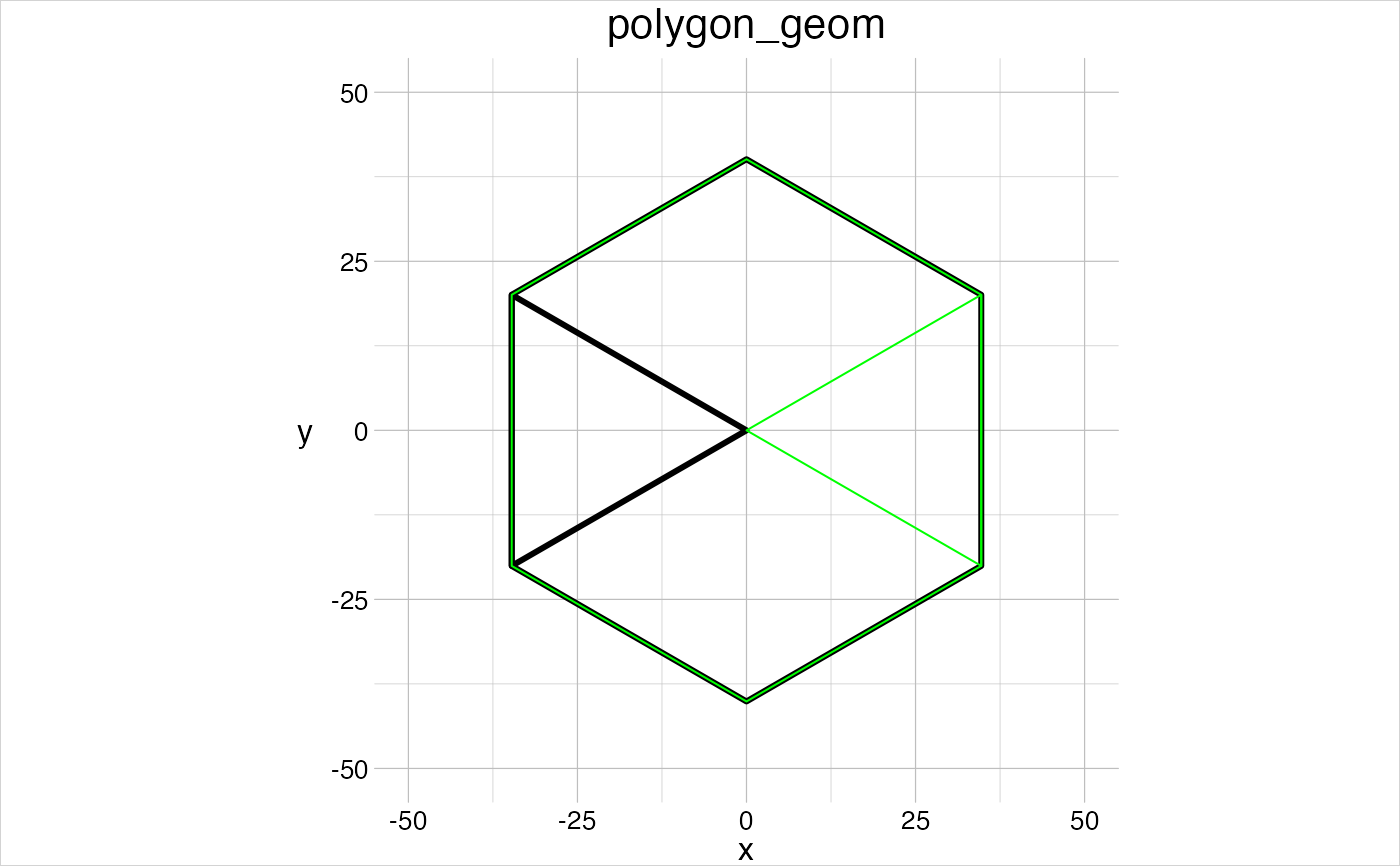Reflect geometric objects across a reflection axis.
gt_reflect(obj, angle, fid = NULL, update = TRUE)
Arguments
| obj | [ |
|---|---|
| angle | [ |
| fid | [ |
| update | [ |
Value
geom of the reflected obj.
Details
The reflection axis is a straight line that goes through the plot origin with the given angle, where positive angles open towards the positive y-axis and negative angles open up towards the negative y-axis.
See also
Other geometry tools:
gt_filter(),
gt_locate(),
gt_pull(),
gt_rotate(),
gt_scale(),
gt_skew(),
gt_stretch(),
gt_translate()
Examples
# reflect several features visualise(gtGeoms$polygon, linewidth = 3) newPoly <- gt_reflect(obj = gtGeoms$polygon, angle = 45, update = FALSE) visualise(newPoly, linecol = "green", new = FALSE)# reflect a single feature visualise(gtGeoms$polygon, linewidth = 3) newPoly <- gt_reflect(obj = gtGeoms$polygon, angle = 90, fid = 2, update = FALSE) visualise(newPoly, linecol = "green", new = FALSE)
